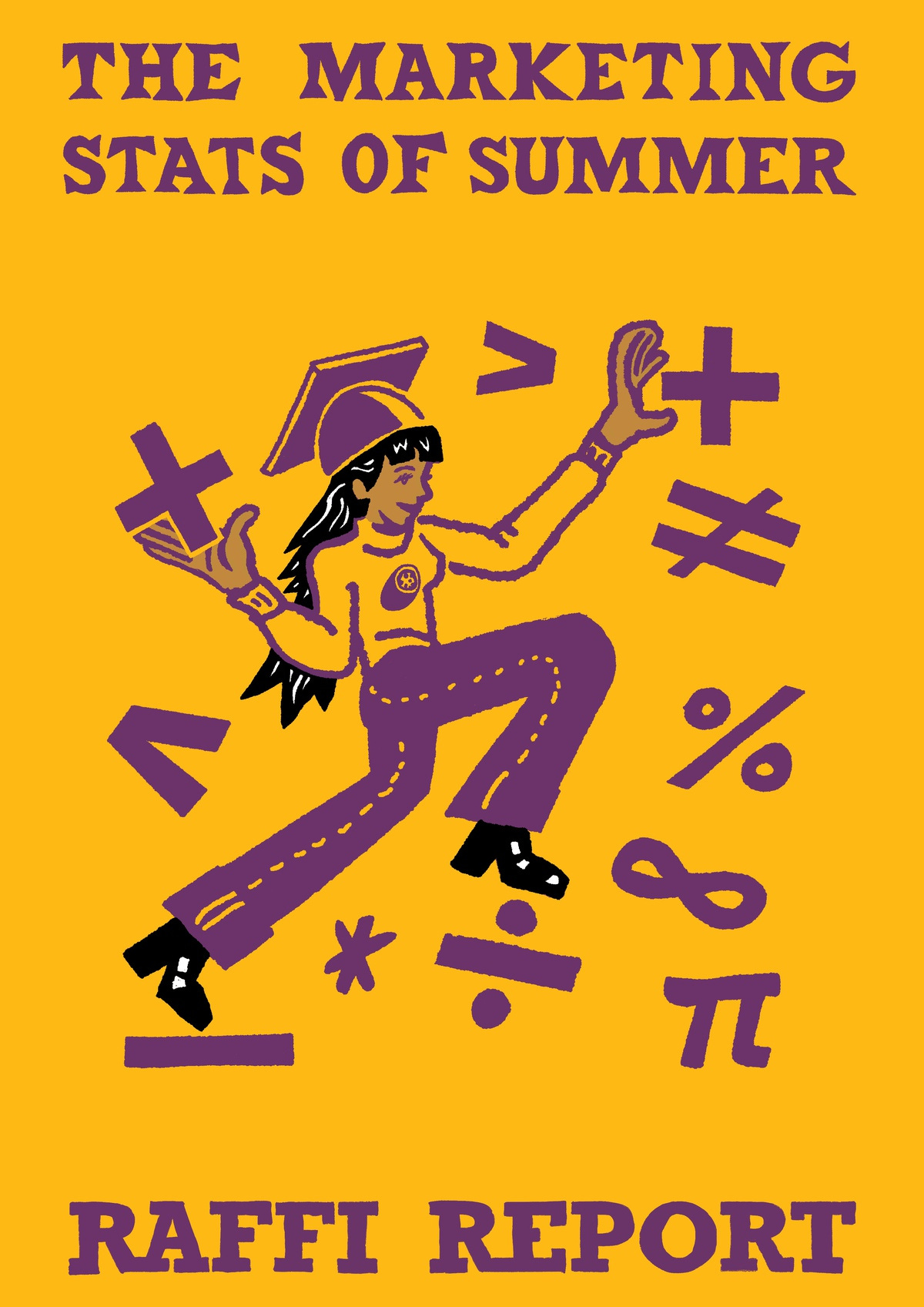If you’re anything like me, summer is a time for catching up on everything marked “I’ll read this later”. Heaps of books, bookmarked newsletters, saved blog posts, liked Tweets… they all pile up in the first half of the year.
Finally, in August, glimmers of time appear in which those get some proper attention.
Having combed through dozens and dozens of these bits and bobs, often centred around the Marketing world, here are my favourite stats, and what they made me realise.
The average person in the United States is subjected to almost 50 push notifications a day, which is an increase of 284 percent compared to 2015. (Julia Alexander)
I don’t think a book has made as much noise in parental circles this year as The Anxious Generation by Jonathan Haidt. The blurb details the thesis well:
“In this book, social psychologist Jonathan Haidt argues that the decline of free-play in childhood and the rise of smartphone usage among adolescents are the twin sources of increased mental distress among teenagers. Haidt delves into the latest psychological and biological research to show how, between 2010 and 2015, childhood and adolescence got rewired. As teens traded in their flip phones for smartphones packed with social media apps, time online soared while time engaging face-to-face with friends and family plummeted, and so did mental health.”
The rebound against being online has been brewing for a while - in part because advertisers and brands have abused the direct access they have to consumers (with those push notifications being one example) - and the movement has found a popular voice through Haidt’s book. Ad blocker usage (which stands at approximately one third of all internet users) remains the elephant in the room for most brands that are over-rotated to paid media. It’s just another reason why organic social is the way forward…
Only 29% of brands are still considered bi-partisan in the US. (YouGov)
“Republicans buy sneakers too” was a famous Michael Jordan quote in relation to how he wanted his brand to be non-partisan. His logic was that only by being bought by everyone could he make the most money, and therefore he wasn’t going to speak out on certain issues…
I’m curious to see, as the world (sadly, in my view) becomes more partisan and tribal (there’s a great book by Ezra Klein on this), brands decide that being partisan is actually going to drive more revenue than staying on the fence.
In snacks, for example, there are brands like Ben and Jerry’s which US conservatives almost seem to boycott on principle. Of course, that brand in particular is known for its activism, but I’m increasingly sure more brands (on both sides of the aisle) are going to adopt this approach as the incentives change among a customer base.
If political bi-partisanship is disappearing, it seems plausible that the brand bi-partisanship will follow suit.The world’s largest FMCG companies have increased their prices by +32% since pre-COVID (+6% pricing CAGR over 2019-H1 2024), [yet] their volume growth was only +3% (+0.7% CAGR) over this period. (Frederic Fernandez)
Big companies have been driving top line growth by raising prices, but haven’t seen volumes rise accordingly because their brand equity hasn’t been grown alongside it.
This is the most dangerous situation you can be in during a value-focussed era for customers, especially as challenger brands are hammering organic / owned channels to mean something to their customers and start to eat away at your dominance.
Every month you’re not taking specialist channels in social / CRM / SEO / influencer-partnerships / micro-brand investments (not just big flashy campaigns you want to win with at Cannes) seriously, is a month in which someone is taking your customers away from you.
It’s time to move away from just pushing down on the price and paid media buttons.43% of Gen Z audiences are in a fandom that nobody in their personal life has heard of (Julia Alexander)
This stat is mad. Practically one in two of the next generation are embedded in some niche fandom that not even their nearest and dearest have heard of…
Gone are the days where youngsters in the US who loved sports could choose between 🏀, ⚾️ or 🏈… Now there are dozens of sports with millions of fans, and hundreds with hundreds of fans…
It used to be Nigella Lawson’s cookbook, now an unknown kid from Mount Juliet, TN is setting the trends in the culinary world…
Everything is fragmented to the nth degree.
It’s this kind of thing that opens my eyes to the new state of play for Marketers: there are all these niches fandoms and corners of the internet where so much action is taking place... and yet it feels impossible for brands to truly access them and be relevant.
Reason being? Still so much of a brand’s effective outreach to customers is taking place on safe, relatively worn-out channels, with legacy playbooks, like Facebook and Google Search.
If TikTok is becoming the new de-facto social content channel and Reddit the new place we go to for info online, are most brands set up to compete?
9 times out of 10 the answer, when you really dig under the hood, is no.5. "We've used multiple LLMs to accurately create or improve over 850,000,000 pieces of data in the catalog. Without the use of generative AI, this work would have required nearly 100X the current headcount to complete in the same amount of time" (Doug McMillon, Walmart CEO)
This is the kind of "toil" that Marketers should be looking automate - but don't get it to do the real work, the creative stuff, the big ideas, the clever copy, the craft, anything which requires taste...
If you do you will lose out to the competition whose people are leaning into all of that.




